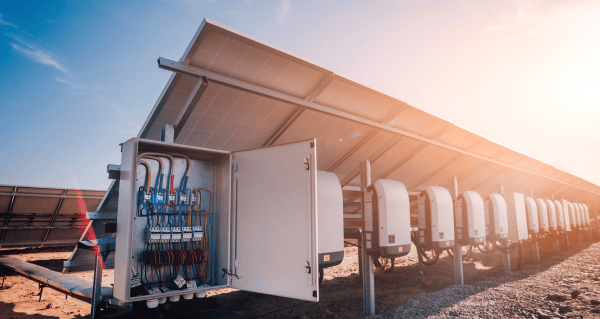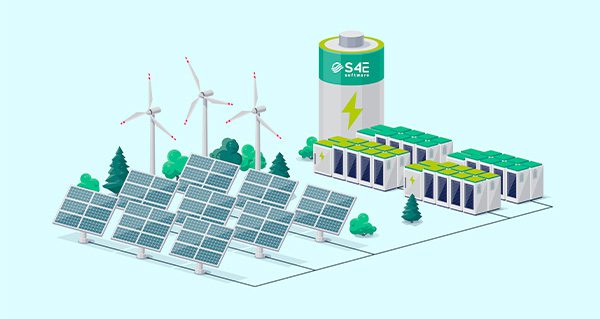In the constantly evolving field of renewable energies, efficient electricity production management is essential to guarantee the stability of the power grid, comply with current regulations or meet specific operational requirements. The solar inverter curtailment solutions offered by Energysoft are key elements in the quest for control and flexibility.
Inverter curtailment: what is it and why is it necessary?
Inverter curtailment is a control strategy that limits the amount of electricity generated, whether fed into the grid or self-consumed. In practical terms, this means asking inverters to produce less, from 0% to 100% of their maximum capacity. This is important for a number of reasons:
- Avoid feed-in to the grid: in the case where self-consumption is fully covered and the electricity produced by a photovoltaic plant begins to exceed local demand, it is compulsory to limit solar production when the grid operator does not accept the feed-in of surplus electricity.
- Avoid network overload: electricity networks have a limited capacity for transporting electricity. By reducing production when this capacity is reached, we prevent the network from being overloaded.
- Comply with regulations: many regulations limit the injection of electricity into the grid. By curtailing inverters, you can comply with these regulations and avoid potential penalties.
- Cost savings: producing electricity can generate significant costs, for example in the form of penalties related to an injection contract or a contract for resale to an aggregator (in the case of resale on the electricity market).
Zero injection: regulatory compliance
Depending on the country’s regulations, or the contract with the electricity operator, solar power plants in the industrial sector (e.g. supermarket car park or factory roofs) may or may not be authorised to feed surplus solar power into the grid.
For self-consumption, the photovoltaic plant is sized to supply a maximum of local consumption requirements. This can lead to periods during the day when production exceeds consumption. In this case, if the surplus cannot be injected into the grid, the photovoltaic inverters need to be limited so that production does not exceed the immediate consumption. S4E SOFTWARE distributes a zero-injection control hardware solution integrated into Energysoft. This solution, which is perfectly adapted to the European market, has RD244 certification in Spain.
Negative prices: inverter clipping in line with the market
Photovoltaic producers can sell their solar output directly on the electricity market. Every day, the market price is set in hourly bands for the following day. Sales are generally made via an electricity aggregator, responsible for ensuring a balanced supply. Like all markets, fluctuations can lead to periods when the feed-in tariff becomes negative, with supply exceeding demand.
To avoid paying penalties for injecting electricity during these periods, it is preferable to use solar inverter with power curtailment. Energysoft offers a fully integrated solution (market price data, software and control hardware – including communication) enabling control of a solar power plant while the price is negative. It has been designed to be both resilient (no real-time interconnection) and to avoid computer network interconnections for cyber security purposes. This standalone package is easy to deploy. It also enables aggregators to access production and availability data for solar power plants and, if the producer so wishes, to notify Energysoft of negative prices.
In short, inverter curtailment, zero injection and negative price management are key elements in efficient renewable energy production management. Energysoft offers advanced solutions to help owners of photovoltaic installations optimise their energy yield while contributing to the stability of the electricity grid and reducing environmental impact.







